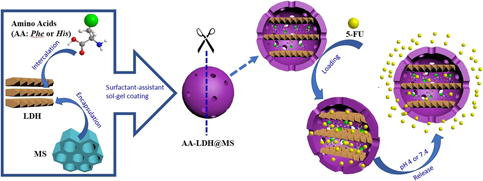Crossref Citations
This article has been cited by the following publications. This list is generated based on data provided by
Crossref.
Arrabito, Giuseppe
Pezzilli, Riccardo
Prestopino, Giuseppe
and
Medaglia, Pier Gianni
2020.
Layered Double Hydroxides in Bioinspired Nanotechnology.
Crystals,
Vol. 10,
Issue. 7,
p.
602.
Hu, Tingting
Gu, Zi
Williams, Gareth R.
Strimaite, Margarita
Zha, Jiajia
Zhou, Zhan
Zhang, Xingcai
Tan, Chaoliang
and
Liang, Ruizheng
2022.
Layered double hydroxide-based nanomaterials for biomedical applications.
Chemical Society Reviews,
Vol. 51,
Issue. 14,
p.
6126.
Muthukrishnan, Lakshmipathy
2022.
Nanonutraceuticals — Challenges and Novel Nano-based Carriers for Effective Delivery and Enhanced Bioavailability.
Food and Bioprocess Technology,
Vol. 15,
Issue. 10,
p.
2155.
Gu, Donghao
Pan, Hao
Xu, Shuo
Chen, Wenyue
Zhu, Renfang
Jiang, Wenjing
and
Pan, Weisan
2022.
Construction and Evaluation of Hyaluronic Acid–Coated Flurbiprofen-Layered Double Hydroxide Ocular Drug Delivery System.
AAPS PharmSciTech,
Vol. 23,
Issue. 8,
Kumari, Sonika
Sharma, Varruchi
Soni, Savita
Sharma, Ajay
Thakur, Abhinay
Kumar, Satish
Dhama, Kuldeep
Sharma, Anil Kumar
and
Bhatia, Shashi Kant
2023.
Layered double hydroxides and their tailored hybrids/composites: Progressive trends for delivery of natural/synthetic-drug/cosmetic biomolecules.
Environmental Research,
Vol. 238,
Issue. ,
p.
117171.
Ren, Jin
Liang, Liang
Yang, Yongqing
Liu, Xiang
Li, Weidong
Liu, Wenbo
Wang, Yali
and
Yu, Jingmou
2023.
Assembling drug-loaded-layered double hydroxide nanohybrids with poloxamer 188 for improved cellular uptake and in vitro efficacy.
Journal of Materials Research,
Vol. 38,
Issue. 2,
p.
337.
Karimi, Soheyla
Namazi, Hassan
and
Aghazadeh, Mohammad
2025.
Simultaneous Release of Hydrophilic and Hydrophobic Drugs by a pH-sensitive Bio-carrier Based on Layered Double Hydroxides Decorated with l-serine-chitosan.
Journal of Polymers and the Environment,
Vol. 33,
Issue. 6,
p.
2758.
Kumar, Jai
Solangi, Nadeem Hussain
Neiber, Rana R.
Bai, Fangyuan
Sharma, Bharat Prasad
Charles, Victor
Zhai, Pengfei
Wang, Zhuanpei
and
Yang, Xiaowei
2025.
Chemical perspectives on synthesis, functionalization, artificial intelligence, and energy storage applications of layered double hydroxides-based nanomaterials: A comprehensive review.
Coordination Chemistry Reviews,
Vol. 537,
Issue. ,
p.
216705.
